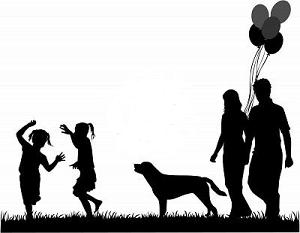|
Proyecto Salón Hogar |
Proyecto Salón Hogar
|
I have a friend. My friend lives in California. My friend is a girl. She is seventeen years old. Her name is Jessica Roberts. Jessica is cool. I like her a lot. She likes to read. She is a good reader. She is good at math too. It is her best subject. Jessica is smart. I like to eat lunch with her. We eat lunch on Monday, Tuesday, and Wednesday. Jessica is my friend.
Questions 1) Where does my friend live? A. Colorado B. Texas C. California
2) Is my friend a girl or a boy? A. She is a girl. B. He is a boy. |
Page 1
![]()
|
3) How old is my friend? A. 15 years old B. 16 years old C. 17 years old
4) What is my friend's first name? A. Jenny B. Jessica C. Julia
5) What is my friend's last name? A. Rowan B. Randal C. Roberts
6) What is Jessica's best subject? A. English B. Math C. Science
7) For how many days a week do I eat lunch with Jessica? A. 3 B. 5 C. 7
Do you have a good friend? What is he or she like? What things do you like to do together? __________________________________________________________________________________________ __________________________________________________________________________________________ __________________________________________________________________________________________ __________________________________________________________________________________________ __________________________________________________________________________________________ __________________________________________________________________________________________
__________________________________________________________________________________________ |
Page 2
![]()
|
My Family
|
Page 3
![]()
|
4) What is the name of my dog?
8) Is my dog small or big?
Literature: Legends A story about an event or a person from the past that has handed down through generations is called a legend. Most legends have a historical base. A legend can be a supernatural beings, elements of mythology, or explanations of natural phenomena, but they pertain to a particular person or place and they are told as a tradition. Legends were used in the past to explain things in a particular way. Legends were mostly told and scarcely written until later. Example: The Beetle The beetle is not killed by the people for the following reason: they have a tradition that one day the chief priests sent messengers in every direction to look for the Lord Jesus, and they came to a field where a man was reaping, and asked him-- "Did Jesus of Nazareth pass this way?" "No," said the man, "I have not seen him." "But I know better," said a little clock running up, "for He was here to-day and rested, and has not long gone away." "That is false," said a great big black. beetle, coming forward; "He has not passed since yesterday, and you will never find Him on this road; try another." So the people kill the clock because he tried to betray Christ; but they spare the beetle and will not touch him, because he saved the Lord on that day. __ fantasy __ realistic
__ magical __ dramatical __ actual |
||||||||||||||||||||||||||||||||||
|
Page 4
Page 5
|
||||||||||||||||||||||||||||||||||
|
Sentence Completion Choose the best word to
complete each sentence. 1) Blue is a color. A. food B. number C. color D. car
2) Russia is a _____. A. country B. city C. street D. number
3) Tennis is a _______. A. country B. sport C. fruit D. color
4) An apple is a _______. A. fruit B. number C. language D. color
5) English is a _______. A. city B. sport C. number D. language
6) Five is a _______. A. color B. number C. city D. language |
||||||||||||||||||||||||||||||||||
|
Page 6
|
||||||||||||||||||||||||||||||||||
|
|
7) A dog is _______. A. a color B. a country C. a city D. an animal
8) Los Angeles is a _______. A. number B. city C. color D. language
9) Tina is a _______.
10) Mr. Jones is a _______. Letter Building
1) __________________________
|
|||||||||||||||||||||||||||||||||
| Page 7
|
||||||||||||||||||||||||||||||||||
|
|
Vocabulary: Suffixes A letter or group of letters placed after a word change its meaning or to change it into a different word group is called a suffix. Example: sad > sadly A suffix -ly alters the
word sad from an adjective to an adverb. Here is a chart of the most common suffixes.
Semantic Fields Words that belong to the same category because they are semantically connected are called semantic fields. They share important properties that allow them to fall into the same group. Example: sharks, algae, and dolphins (all live in the ocean)
Connect each semantic field with a group of words in common.
_______________________ 1. cookie, doughnut, cake _______________________ 2. pants, skirt, shirt _______________________ 3. gloves, scarves, hats _______________________ 4. grapes, coconuts, mangos _______________________ 5. cereal, waffles, oatmeal
Mark the word that describes the semantic field.
|
|||||||||||||||||||||||||||||||||
| Page 8
|
||||||||||||||||||||||||||||||||||
|
|
Grammar: Linking Verbs A verb that connects the subject of the sentence to a word or words that describes the subject is called a linking verb. The sentence structure below is used with linking verbs.
These verbs are always linking verbs. to be: Example: The wheel is blackened. to become: Example: The caterpillar became a butterfly. to seem: Example: The sheet seems dry now.
Write the linking verbs in the sentences. _____________ 1. The wheel is golden. _____________ 2. The cake taste delicious. _____________ 3. The girl is brave. _____________ 4. I am sleepy. _____________ 5. The man grew silent.
The Verb "Be" "Be" is the most irregular verb in the English language and normally a linking verb that conditions the subject. When a sentence has "be" as the main verb it follows three structures. be + noun Example: Philip is an actor. be + an adjective Example: Sharlene is witty. be + a prepositional phrase Example: The girl is at the ranch.
Example: Sophia is writing a poem. (Is
functions as an auxiliary verb and the word writing as
the main verb)
|
|||||||||||||||||||||||||||||||||
|
Page 9
|
||||||||||||||||||||||||||||||||||
|
|
Write the verb "be" in each sentence. ___________ 1. The island was called Hawaii. ___________ 2. The dogs were all scared. ___________ 3. Something is coming out of the darkness. ___________ 4. There was no salt found anywhere in the kitchen. ___________ 5. The people were ready for things to settle down.
The Present Progressive Tense Present progressive tense is the idea that an action is happening during a specified time. Example: Something is coming out of the woods. The subject (something) is performing the action (coming) at the same time the sentence is expressed.
Finish the sentences with the present progressive tense of the verb in parenthesis. 1. He (write) _________________ his father a note. 2. They (clean) _________________ his house. 3. I (try) _________________ to finish my chores on time. 4. The narrator (tell) __________________ a great tale. 5. We (learn) ___________________ how myths came to exist.
Finish the sentences with the correct form of the verb "be". 1. She ______________ there last week. 2. I ______________ considering helping you. 3. You ______________ writing something next week. 4. I ______________ a diesel mechanic. 5. He _______________ the best at wind surfing.
A closing sentence or conclusion is the closing part of your paragraph or essay and should be the best part of your writing. Conclusions do three things. - Show the importance of the topic sentence. - Establish a sense of completeness to your writing. - Make a final impression on the reader before they finish
reading your material. Remember, the conclusion should have more supporting
information than the topic sentence to be written
correctly. |
|||||||||||||||||||||||||||||||||
|
Page 10
|
||||||||||||||||||||||||||||||||||



